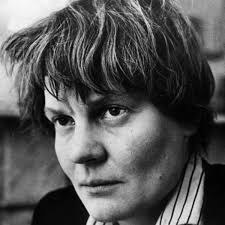I’m still working my way through an Iris Murdoch reader. She has to be one of the clearest and most astute systematic thinkers of the 20th century. It’s just an amazing mind. This passage is lengthy, but worth the read. She has been sailing twixt the Scylla of Kantian aesthetics and the Charybdis of Hegelian aesthetics.

“Art and morals are, with certain provisos which I shall mention in a moment, one. Their essence is the same. The essence of both of them is love. Love is the perception of individuals. Love is the extremely difficult realisation that something other than oneself is real. Love, and so art and morals, is the discovery of reality. What stuns us into a realisation of our supersensible destiny is not, as Kant imagined, the formlessness of nature, but rather is unutterable particularity; and most particular and individual of all natural things is the mind of man. That is incidentally why tragedy is the highest art, because it is most intensely concerned with the most individual thing. Here is the true sense of that exhilaration of freedom which attends art and which has its more rarely achieved counterpart in morals. It is the apprehension of something else, something particular, as existing outside us. The enemies of art and of morals, the enemies that is of love, are the same: social convention and neurosis. One may fail to see the individual because of Hegel’s totality, because we are ourselves sunk in a social whole which we allow uncritically to determine our reactions, or because we see each other exclusively as so determined. Or we may fail to see the individual because we are completely enclosed in a fantasy world of our own into which we try to draw things from outside, not grasping their reality and independence, making them into dream objects of our own. Fantasy, the enemy of art, is the enemy of true imagination: Love an exercise of the imagination. This was what Shelley meant when he said that egotism was the great enemy of poetry. This is so whether we are writing it or reading it. The exercise of overcoming one’s self, of the expulsion of fantasy and convention, which attends for instance the reading of King Lear is indeed exhilarating. It is also, if we perform it properly which he hardly ever do, painful. It is very like Achtung. Kant was marvellously near the mark. Be he thought of freedom as the aspiration to a universal order consisting of a prefabricated harmony. It was not a tragic freedom. The tragic freedom implied by love is this: that we all have an indefinitely extended capacity to imagine the being of others. Tragic, because there is no prefabricated harmony, and others are, to an extent we never cease discovering, different from ourselves. Nor is there any social totality within which we can come to comprehend differences as placed and reconciled. We have only a segment of the circle. Freedom is exercised in the confrontation by each other, in the context of an infinitely extensible work of imaginative understanding, of two irreducibly dissimilar individuals. Love is the imaginative recognition of, that is respect for, this otherness.”

Recent Comments